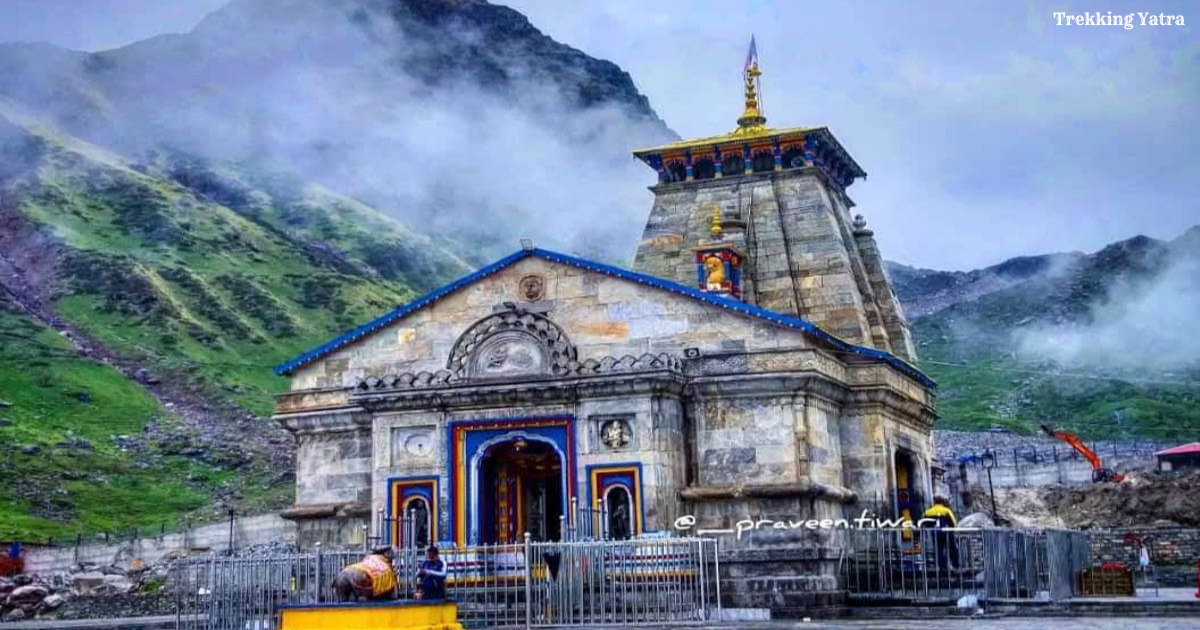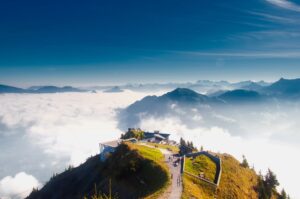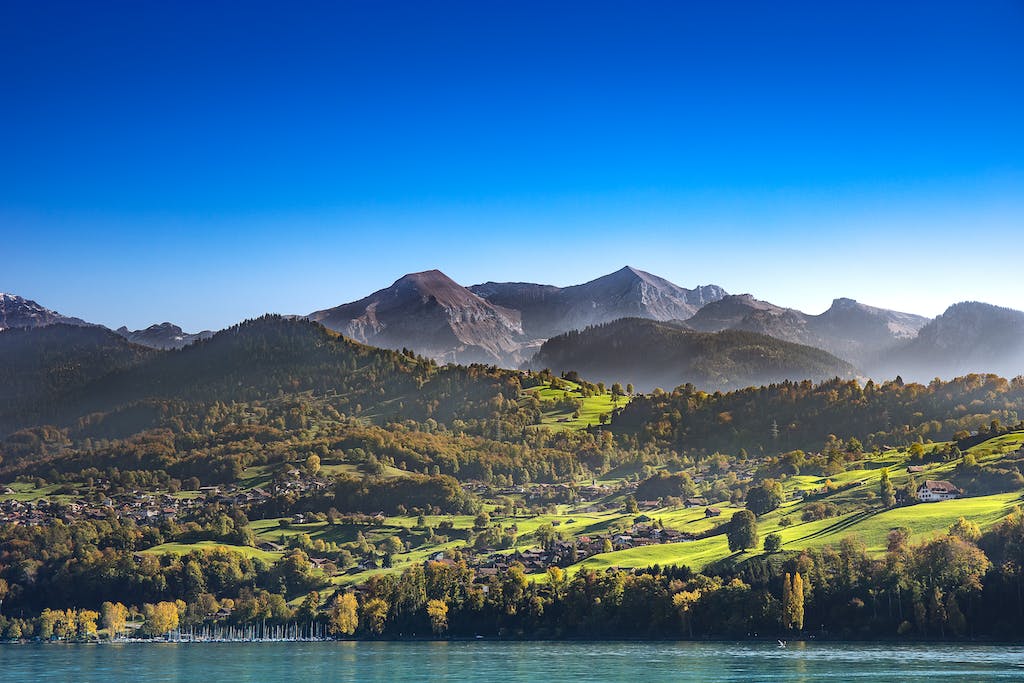Welcome to the sacred enclave of Kedarnath Temple, an ethereal sanctuary cradled within the grandeur of the Himalayas. As we embark on this spiritual odyssey, we delve into 20 crucial questions, illuminating the path to divine connection and inner peace. From practical travel advice to the spiritual significance of rituals, join us on a journey where earthly trails converge with celestial realms, leading us closer to the divine presence of Lord Shiva at Kedarnath Temple.

Kedarnath Temple
Kedarnath Temple, nestled in the Garhwal Himalayas of Uttarakhand, India, is one of the holiest Hindu pilgrimage sites dedicated to Lord Shiva. Situated at an altitude of 3,583 meters (11,755 feet), the temple holds immense religious significance and attracts devotees worldwide. Accessible via a trek or helicopter ride, Kedarnath offers breathtaking views of the surrounding snow-capped peaks and serene landscapes. The temple’s architecture and location amidst the rugged mountains add to its allure, making it a must-visit destination for spiritual seekers and nature enthusiasts alike.
Here are 20 questions or Answers related to traveling to the Kedarnath Temple:
Q.1:- What is the best time of year to visit Kedarnath Temple?
The best time to visit Kedarnath Temple is typically from May to June and September to October. During these months, the weather is relatively mild, with clear skies and comfortable temperatures, making it ideal for trekking and outdoor activities. The temple usually remains open for visitors during these periods, and the surrounding landscapes are lush and beautiful, adding to the overall experience. However, it’s essential to note that Kedarnath experiences harsh winters with heavy snowfall, making access difficult from November to April. Therefore, visiting during the recommended months ensures a more enjoyable and accessible pilgrimage experience.
Q.2:- How do I reach Kedarnath Temple?
To reach Kedarnath Temple, travelers usually start from Rishikesh or Haridwar and then proceed by road to Sonprayag or Gaurikund. From there, a challenging 16-kilometer trek or helicopter services during the pilgrimage season are the main options to reach the temple complex. Pony or doli services from Gaurikund are available for those who prefer not to trek.
Q.3:- Are there any specific travel restrictions or permits required to visit Kedarnath Temple?
Yes, travelers to Kedarnath Temple may require permits for certain trekking routes, especially during peak seasons. Additionally, there might be restrictions on vehicular access to certain areas, requiring permits or passes. It’s advisable to check with local authorities or tour operators for the latest information on any travel restrictions or permits needed before planning your trip.
Q.4:- What are the accommodation options available near Kedarnath Temple?
Near Kedarnath Temple, accommodation options primarily include Guesthouses, Dharamshala (religious rest houses), tents, and government-operated tourist lodges. These options provide basic amenities for pilgrims and travelers visiting the temple.
Here’s a bit more detail:
1. Guesthouses:
There are several guesthouses and lodges available near Kedarnath Temple. These guesthouses usually offer basic amenities such as beds, blankets, and sometimes meals. They are managed by residents or private operators and cater to pilgrims and tourists visiting the temple.
2. Dharamshala:
Dharamshalas are religious rest houses commonly found near pilgrimage sites in India. They offer simple accommodation at affordable rates to travelers, particularly pilgrims. Dharamshalas near Kedarnath Temple provides basic facilities like dormitory-style rooms, common bathrooms, and sometimes meals.
3. Tents:
During peak pilgrimage seasons, temporary tent accommodations are set up near Kedarnath Temple to accommodate the influx of visitors. These tents offer a more rustic experience but provide shelter and basic amenities like bedding and meals.
4. Government-operated Tourist Lodges:
The government of Uttarakhand operates tourist lodges and campsites near Kedarnath Temple. These lodges offer relatively better facilities compared to guesthouses and Dharamshala, including clean rooms, hot water, and dining options. However, they may get booked up quickly during peak seasons, so booking is advisable.
These accommodation options cater to the diverse needs and budgets of travelers visiting Kedarnath Temple, allowing them to find suitable places to stay during their pilgrimage or travel experience.
Q.5:- What are the different modes of transportation available for traveling within Kedarnath?
Within Kedarnath, the modes of transportation are limited due to its remote location and mountainous terrain. Here are the primary modes of transportation available:
1. Walking/Trekking:
Most of the areas within Kedarnath are only accessible by foot. The main pilgrimage route from Gaurikund to Kedarnath involves a trek of approximately 16 kilometers (10 miles). Additionally, within the town of Kedarnath itself, visitors typically explore on foot.
2. Ponies/Mules:
Ponies or mules are available for hire at Gaurikund for those who may find trekking difficult. These animals can be used to carry pilgrims or luggage up the steep and rugged terrain to Kedarnath.
3. Palanquins/Dolis:
Traditional palanquins or dolls, carried by porters, are also available for hire at Gaurikund for those who are unable to trek. However, their use has declined in recent years.
4. Helicopter Services:
Helicopter services are available from Phata, Sersi, and Guptkashi to Kedarnath. These services provide a faster and more convenient mode of transportation, especially for elderly or physically challenged pilgrims. Helicopter services may also be available for sightseeing around Kedarnath.
5. Electric Carts:
In recent years, electric carts have been introduced to transport elderly and disabled pilgrims within Kedarnath. These carts operate in certain areas of Kedarnath and can be useful for short distances.
It’s important to note that the availability of these modes of transportation may vary depending on weather conditions, local regulations, and other factors. Additionally, while helicopters offer convenience, they are subject to weather conditions and may not operate during inclement weather.
Q.6:- What is the weather like in Kedarnath month-wise?
Here’s a brief overview of the weather in Kedarnath month-wise:
- April to June: Cool to pleasant, ideal for pilgrimage and trekking.
- July to September: Monsoon with heavy rainfall, landslides, and roadblocks.
- October to March: Cold with occasional snowfall, accessibility may be limited due to snow.
Q.7:- Are there any trekking routes to reach Kedarnath Temple?
Yes, there is a popular trekking route to reach Kedarnath Temple known as the Kedarnath Trek. This trek starts from a place called Gaurikund, which is the base camp for the trek. The trekking distance from Gaurikund to Kedarnath Temple is approximately 16 kilometers.
Q.8:- Can you provide some information about the history and significance of Kedarnath Temple?
Kedarnath Temple, located in the Garhwal Himalayas of Uttarakhand, India, is one of the holiest Hindu temples dedicated to Lord Shiva. Believed to have been built by Adi Shankaracharya in the 8th century CE, the temple stands at an altitude of 3,583 meters (11,755 feet) above sea level, making it one of the highest among the Jyotirlingas (sacred abodes of Lord Shiva). Legend has it that the temple is associated with the Mahabharata epic, where Pandavas sought forgiveness from Lord Shiva for their sins after the Kurukshetra war. The significance of Kedarnath lies in its spiritual importance as one of the twelve Jyotirlingas and its breathtaking natural surroundings, attracting devotees and trekkers alike from around the world.
Q.9:- Are there any nearby attractions or places of interest worth visiting along with Kedarnath Temple?
Yes, there are several nearby attractions and places of interest worth visiting along with Kedarnath Temple, including the Vasuki Tal Lake, Chorabari Tal (Gandhi Sarovar), Bhairavnath Temple, Shankaracharya Samadhi, and the Kedarnath Wildlife Sanctuary.
Q.10:- Is it safe to travel alone to Kedarnath Temple?
Yes, it is generally safe to travel alone to Kedarnath Temple, but it’s always recommended to take necessary precautions and stay informed about the current conditions, especially regarding weather and trekking routes.
Q.11:- What are the essential items to carry while visiting Kedarnath Temple?
Essential items to carry while visiting Kedarnath Temple include:
- Warm clothing (jacket, sweater, hat, gloves) due to cold temperatures, especially in the evenings.
- Comfortable walking shoes or trekking boots, depending on your mode of transportation.
- Rain gear (umbrella or waterproof jacket) as the weather can be unpredictable.
- Water bottle to stay hydrated, as the altitude can cause dehydration.
- Snacks or energy bars for sustenance during the journey.
- Personal identification and necessary permits or documents for travel.
- Basic first aid kit with essentials like band-aids, pain relievers, and altitude sickness medication.
- Mobile phone and power bank for communication and emergencies.
- Flashlight or headlamp for navigating in low-light conditions.
- Cash in small denominations for purchasing items along the way.
Q.12:- Are there any medical facilities available in Kedarnath for emergencies?
In Kedarnath, there are basic medical facilities such as first aid centers and clinics to address minor health issues and emergencies. However, for more serious medical needs, it is advisable to seek assistance in nearby towns like Gaurikund or Sonprayag, where more comprehensive medical facilities and hospitals are available.
Q.13:- Can you recommend any local guides or tour operators for exploring Kedarnath Temple and its surroundings?
Here are a few local guides and tour operators you may consider for exploring Kedarnath Temple and its surroundings:
- Kedar Valley Tours & Travels
- Kedarnath Helicopter Services
- Kedar Valley Trekking Expeditions
- Kedarnath Yatra Packages
- Kedar Nath Dham Travel Agency
These are just a few options, and it’s always a good idea to read reviews and check their credentials before booking any tours or services.
Q.14:- Are there any specific rituals or practices that visitors should be aware of before visiting Kedarnath Temple?
Before visiting Kedarnath Temple, visitors should be aware of the custom of taking a holy dip in the Mandakini River, known as “Gauri Kund Snan,” believed to purify one’s soul. Additionally, it’s customary to offer prayers at the nearby Bhairavnath Temple before proceeding to Kedarnath Temple, as Bhairavnath is considered the protector of the region.
Q.15:- Is photography allowed inside Kedarnath Temple?
Photography is generally not allowed inside Kedarnath Temple.
Q.16:- What are the dining options available near Kedarnath Temple?
Near Kedarnath Temple, you’ll find simple dining options primarily consisting of local eateries and small restaurants serving vegetarian food. These establishments typically offer traditional Indian cuisine such as dal (lentils), rice, roti (flatbread), sabzi (vegetable dishes), and snacks like samosas and pakoras. It’s advisable to carry some snacks and water with you as the options might be limited and the altitude can make trekking to dining places more challenging.
Q.17:- Are there any specific guidelines for dress code while visiting Kedarnath Temple?
Yes, visitors are advised to dress modestly while visiting Kedarnath Temple, covering their shoulders and legs appropriately.
Q.18:- Are there any festivals or events celebrated at Kedarnath Temple that I should plan my visit around?
Yes, the most significant festival celebrated at Kedarnath Temple is the Maha Shivaratri, which usually falls in February or March. It’s a grand celebration attracting devotees from all over the country. If you plan your visit around this time, you’ll witness vibrant rituals and festivities honoring Lord Shiva.
Q.19:- How much time should I allocate for exploring Kedarnath Temple and its surroundings?
Allocate at least 1-2 hours for visiting Kedarnath Temple itself. If you wish to explore the surrounding areas or engage in trekking, consider setting aside 3-5 days for a more immersive experience. This timeframe allows for acclimatization, temple visits, and ample time to appreciate the natural beauty of the region.
Q.20:- Is there any specific etiquette or customs I should follow while visiting Kedarnath Temple?
When visiting Kedarnath Temple, it’s important to:
- Dress modestly and respectfully.
- Maintain silence and avoid loud conversations.
- Avoid bringing non-vegetarian food or alcohol.
- Follow the instructions of priests and temple authorities.
- Respect the sanctity of the temple premises and refrain from littering.

Conclusion
In conclusion, traveling to Kedarnath Temple offers a unique and spiritually enriching experience. Whether you’re interested in the temple’s historical significance, seeking adventure through trekking routes, or simply looking to immerse yourself in the serene surroundings, Kedarnath has something to offer for every traveler. Prioritize planning your trip during favorable weather conditions, ensuring you have the necessary permits and accommodations booked in advance. Respect the temple’s customs and rituals, and be mindful of the local guidelines and etiquette. With proper preparation and an open heart, your journey to Kedarnath Temple is sure to be a memorable and fulfilling experience.
If you liked this place or are going to go, you can tell by commenting. And yes if you have any questions you can also ask, I am going to answer them. Thank you and safe travel.


Have there been any accounts of unexplained phenomena or encounters with spirits or ghosts at Kedarnath Temple that have left visitors feeling unsettled or intrigued?”,
“refusal